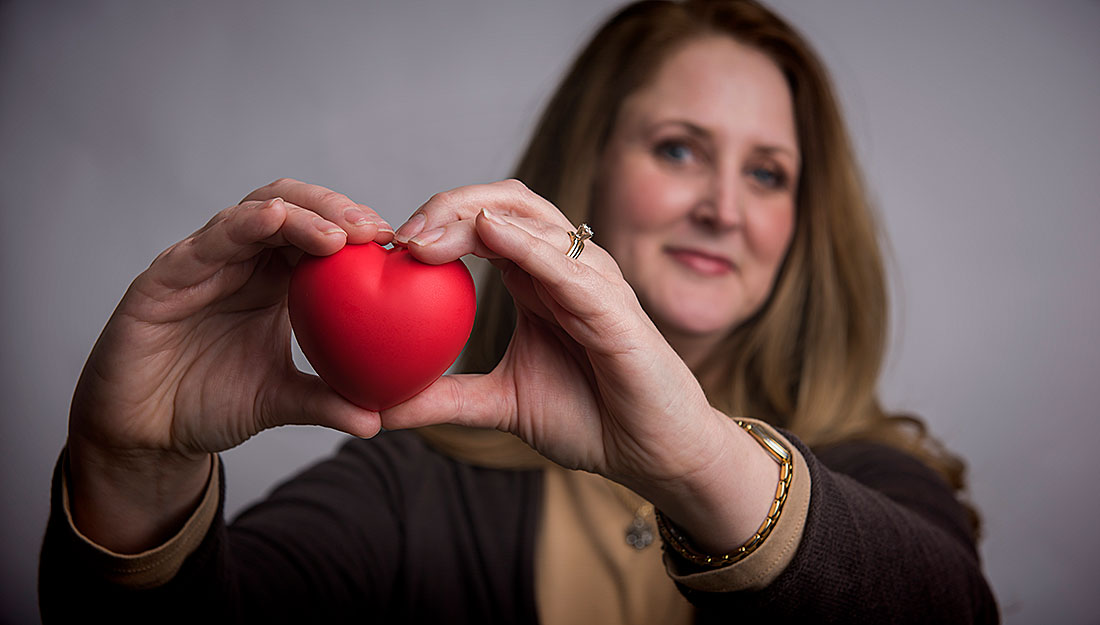- Dominic Hernandez
- Community, Healthy Living, Show on VR homepage, Trending
Good cholesterol versus bad: The meaning behind the numbers
What to know about your cholesterol and keeping your heart healthy

According to the Centers for Disease Control and Prevention, an estimated 30 percent of American adults have high cholesterol, but fewer than 30 percent of them have the condition under control. Having high cholesterol doubles your risk for heart disease, which is the leading cause of death in the United States.
Although cholesterol may just seem like a scary conversation topic between you and your physician, it’s more complicated than that. John P. Erwin III, MD, a cardiologist and professor at the Texas A&M College of Medicine, breaks down cholesterol and gives you tips on keeping your heart strong.
What is cholesterol?
Cholesterol itself isn’t bad, it’s just one of the substances created by our bodies to keep us healthy. Your liver creates cholesterol from food to form cell membranes, aid in digestion, convert vitamin D in the skin and develop hormones. Cholesterol is stored inside lipoproteins that carry cholesterol to and from cells.
While there are several types of lipoprotein, your cholesterol scores measure two main types: low-density lipoprotein, or LDL, and high-density lipoprotein, or HDL. Managing the two will keep you and your health care provider happy.
What is LDL vs. HDL?
LDL cholesterol is considered the “bad” cholesterol, and it can build up in the walls of your arteries, causing a process called atherosclerosis, a form of heart disease. Elevated levels of LDL can lead to blockages in blood vessels that may in turn cause heart attacks, angina, stroke, limb pain or limb loss due to poor circulation.
READ MORE: 6 surprising signs of an unhealthy heart
In order to keep plaque from building up in your artery walls, your body makes a “good” type of lipoprotein to store cholesterol and keep your blood vessels clear.
“HDL is ‘good’ cholesterol, and its function is to remove LDL,” Erwin said. “The HDL keeps the LDL from building up and takes it back to the liver where it is broken down into component parts.”
How do you improve your cholesterol at home?
If you want to keep your HDL high and your LDL low, then start by looking at your dinner plate. “Consuming saturated and trans fats raise LDL cholesterol levels in the blood, thereby in creasing the risk of heart disease,” Erwin said. “Unsaturated fats, such as monounsaturated and polyunsaturated, do not raise LDL cholesterol and are beneficial when consumed in moderation.”
Making healthier eating choices can improve your heart health overall, while improving your cholesterol.
“A good diet, such as the Mediterranean Diet, can both raise good cholesterol and lower bad cholesterol by limiting ‘bad fats’, increasing ‘good fats’, and increasing fiber in the diet,” Erwin continued. “Alcohol, such as red wine in moderation, can also raise the HDL in the blood stream.”
Engaging in physical activity is another way to improve your cholesterol. Working out not only raises HDL levels, but it also decreases your chances of being overweight, which can lead to higher amounts of LDL.
According to the American Heart Association, an average of 40 minutes of moderate-to vigorous-intensity aerobic activity three or four times a week is best to lower blood pressure and cholesterol. Types of moderately intense activities include walking briskly, water aerobics and bicycling slowly. Vigorous activities include swimming laps, jogging and jumping rope.
If this seems too much of an uphill task, be sure to start with a more reachable goal. “Setting smaller goals and changing your routine a little at a time can benefit your health in the long run,” Erwin said. “Something is always better than nothing.”
How can my health care team improve my cholesterol?
For some people, having bad cholesterol runs in the family, and lifestyle changes may not be enough to get your heart health on track.
“In those people with higher risk, lifestyle modifications need to be performed along with medical therapy under the supervision of a physician.” Erwin said. “These people should be closely monitored by cardiologists, cholesterol specialists or endocrinologists, in conjunction with their primary care physicians.”
Your health care team can help you determine your cholesterol ratio, by dividing your HDL cholesterol number into your total cholesterol number. An ideal ratio is less than 3.5-to-1, and a number greater than that increases your risk for heart disease. As always, it’s best to have discussions about your individual health with your primary care provider.
Media contact: media@tamu.edu


